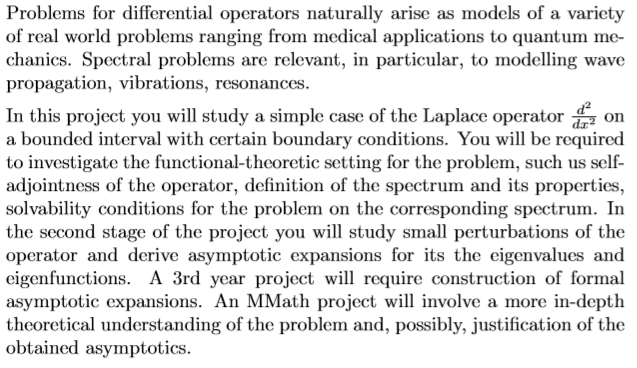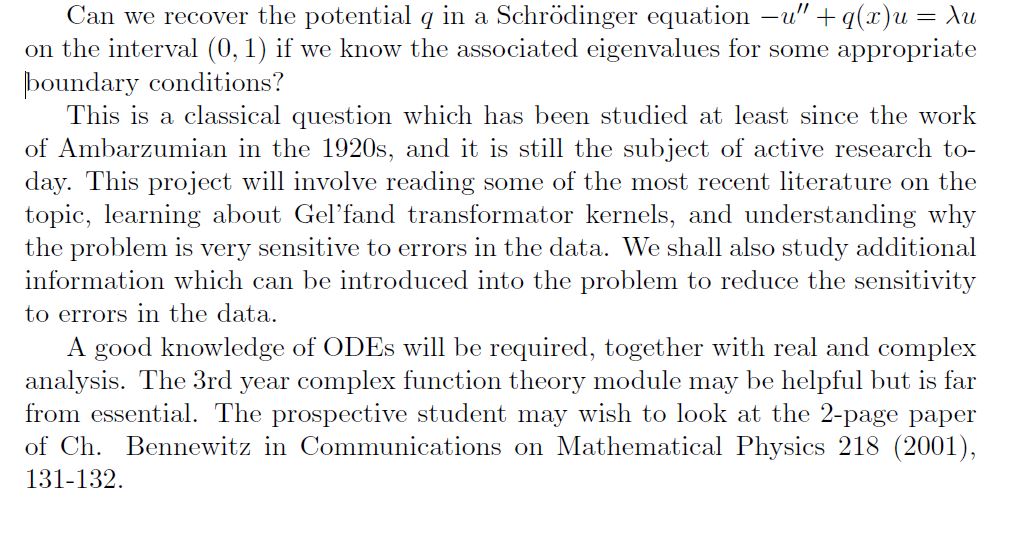Title of project:
Embedded Eigenvalues of Schrödinger Operators
Code:
KMS2122B
Supervisor:
Prof Karl Schmidt
Project description:
The spectrum of Schrödinger operators, corresponding to the set of admissible energies of a quantum mechanical system, consists of a half-line of continuous spectrum and additional discrete eigenvalues in many physically relevant situations. It is a rarer and more unstable phenomenon to have eigenvalues embedded inside the continuous spectrum. A first example of such a Schrödinger operator was first constructed by John von Neumann and Eugene Wigner in 1929.
The project will be focussed on understanding a recently published construction which allows to ensure the presence of any finite number of predefined embedded eigenvalues. This challenging project gives the opportunity to learn and apply some techniques of the spectral analysis of ordinary differential operators.
Prerequisite 2nd/3rd year modules:
MA2006 Real Analysis
MA3012 Ordinary Differential Equations
MA3005 Introduction to Functional and Fourier Analysis
Number of students who could be supervised for this project:
1




